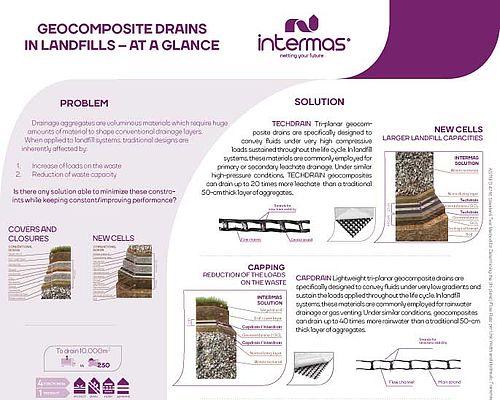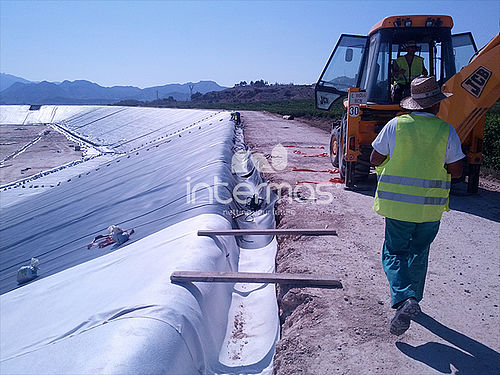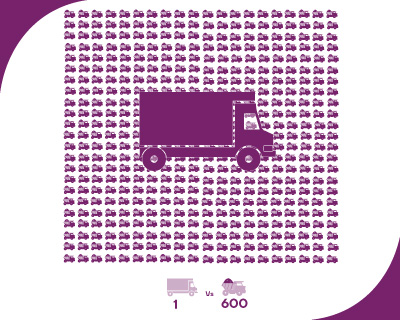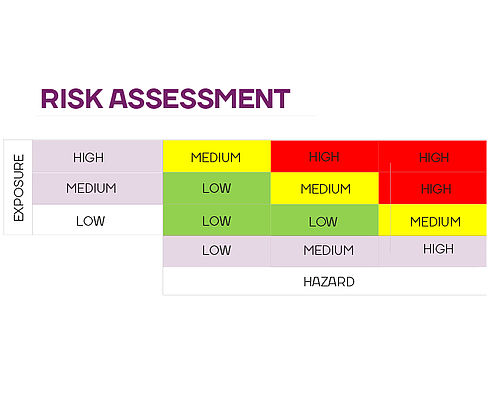Drainage aggregates are voluminous materials which require huge amounts of material to shape conventional drainage layers. When applied to landfill systems, traditional designs are inherently affected by:
1. Increase of loads on the waste
2. Reduction of waste capacity

Is there any solution able to minimize these constraints while keeping constant/improving performance?
Intermas holds the Solution

CAPDRAIN Lightweight tri-planar geocomposite drains are specifically designed to convey fluids under very low gradients and sustain the loads applied throughout the life cycle. In landfill systems, these materials are commonly employed for rainwater drainage or gas venting. Under similar conditions, Capdrain geocomposites can drain up to 40 times more rainwater than a traditional 50-cm thick layer of aggregates.

TECHDRAIN Tri-planar geocomposite drains are specifically designed to convey fluids under very high compressive loads sustained throughout the life cycle. In landfill systems, these materials are commonly employed for primary or secondary leachate drainage. Under similar high-pressure conditions, Techdrain geocomposites can drain up to 20 times more leachate than a traditional 50-cm thick layer of aggregates.
TECHNICAL SUPPORT
The short-term transmissivity value is obtained according to the test method ASTM D 4716 under site-specific conditions of normal load, hydraulic gradient, boundaries, seating or loading time and the permeating fluid and its temperature. All these variables greatly influence the final performance of the geocomposite drain, and therefore must be explicitly stated in every technical document.
It must be noted that the datasheet values commonly refer to the short-term transmissivity behavior and, according to GRI-GC8 guide, these are contingent on a series of reduction factors to account for the long-term performance:
where:
q(allow) = allowable flow rate for a drainage geocomposite
q(100) = initial flow rate determined under simulated conditions for 100-h duration (ASTM D 4716)
RF(CR)= reduction factor for creep
RF(CC)= reduction factor for chemical clogging
RF(BC)= reduction factor for biological clogging
RF(GI)= reduction factor for geotextile intrusion (= 1.0 under real on-site boundaries)






